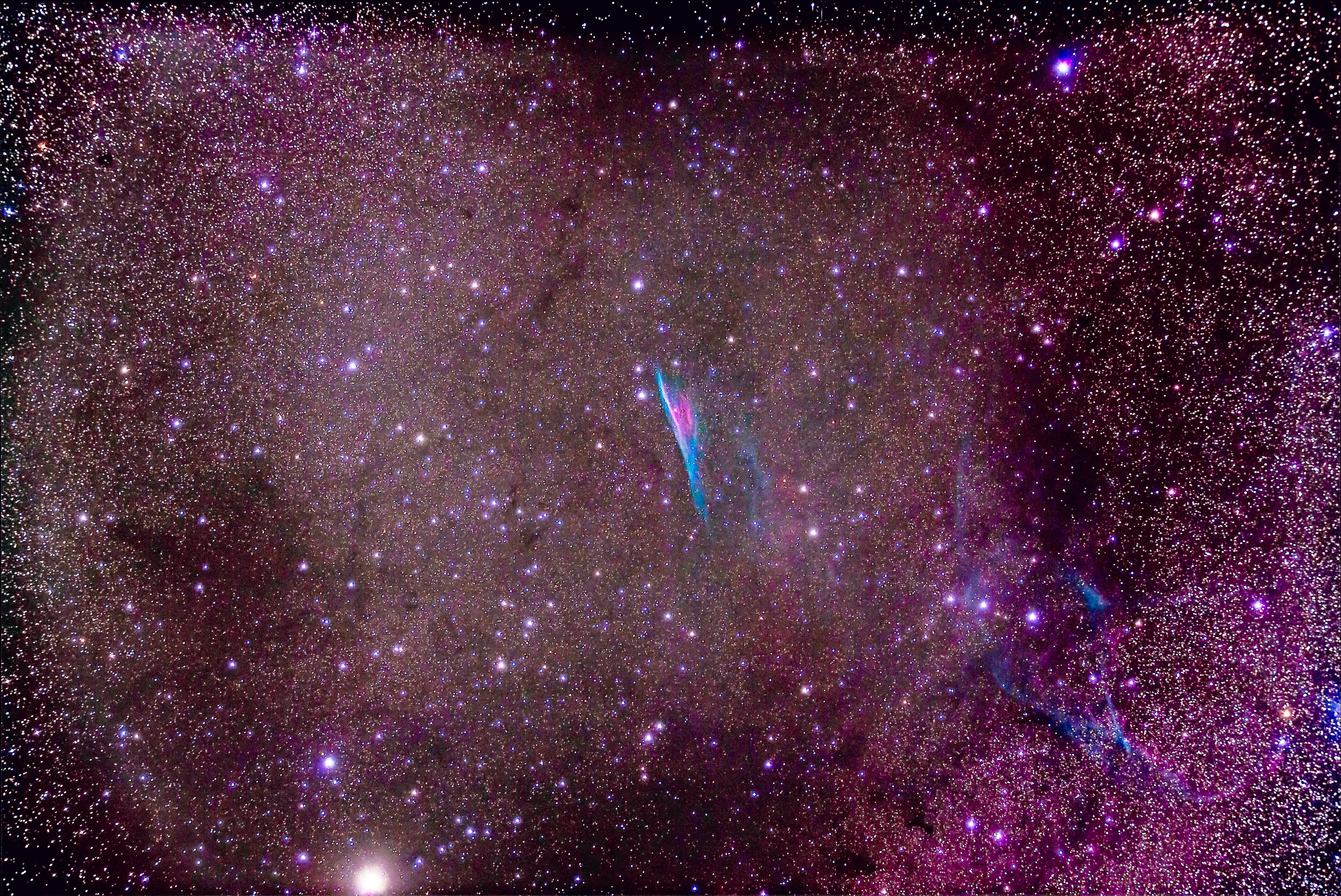
The Pencil Nebula (NGC 2736) is the brightest part of the Vela supernova remnant. About 11,000 years ago, humans in the Southern Hemisphere witnessed a brilliant new star in what is now known as the constellation Vela. It would have been the brightest object in the sky after the Sun. The progenitor star was massive; its death was a type II supernova. For comparison, the famous supernova of 1054 that created the Crab Nebula (M1) was magnitude –4, visible in the daytime for three weeks. It is about 6,500 light-years away. Vela was nearly seven times closer!
The Vela supernova remnant is reminiscent of the Veil Nebula in Cygnus and the Jellyfish Nebula in Gemini. Both are now glowing arcs of gas; the former is 3° across and 2,400 light-years away, while the latter is 50′ across and 5,000 light-years distant. The Vela supernova remnant (also cataloged as Gum 16) is much larger, composed of thin filaments of gas spread across 8° of the southern sky. NGC 2736 itself is about 815 light-years away. As supernova remnants go, this one is practically in our backyard.
Its name describes the shape: a thin, pencil-like cloud of glowing hydrogen. The half-degree-long nebula lies right on the galactic plane, roughly 3° south-southwest of Lambda (λ) Velorum. The nebula is located about 4.5° west of the Vela pulsar and is moving through space at a speed of 400,000 mph (644,000 km/h). The eastern side of the Pencil Nebula is the brightest as it encounters gas in the interstellar medium. The famous deep-sky observer John Herschel discovered this object in 1835 from an observatory in South Africa.









